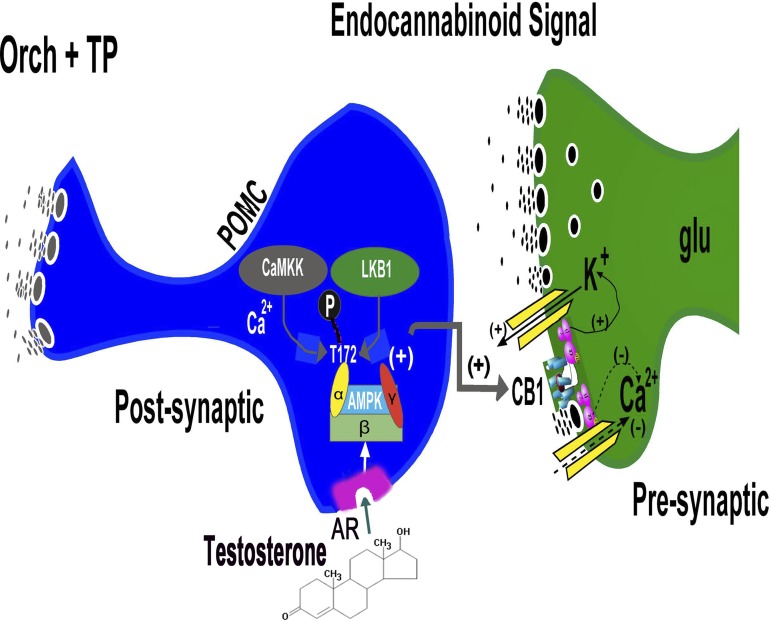Fig. 12.
Schematic for how testosterone enhances CB1 receptor-mediated signaling at glutamatergic inputs impinging upon POMC neurons. Testosterone induces hyperphagia and potentiates cannabinoid tone at the CB1 receptors in the glutamatergic nerve terminals by activating cellular energy sensor AMPK. The rapidity of the testosterone-induced changes in energy balance suggests that the steroid may be acting at a membrane androgen receptor like that shown in striated muscle (17, 74, 78). The activation of this heterotrimeric AMPK complex may be due to upstream kinases like calmodulin-dependent protein kinase kinase (CaMKK) and liver kinase B1 (LKB1) via phosphorylation of threonine residue 172 (T172) of the α-subunit that occurs in response to increases in intracellular calcium and the AMP/ATP ratio. This in turn may lead to increased endocannabinoid tone by either enhancing synthesis, inhibiting breakdown, or attenuating reuptake and removal from the synaptic cleft. The endocannabinoids could then act transynaptically in a retrograde fashion at the CB1 receptor to augment the cannabinoid-induced presynaptic inhibition of glutamate release.

